Electrochemiluminescence and Chemiluminescence Lab
With some delay, updates from the last labs in “Inorganic Electrochemistry” class that I teach this semester. In the lecture, we covered briefly electrochemiluminescence and chemiluminescence, so in the following lab, we tried to see both, ECL by following experiments from Bard’s papers, and for chemiluminescence, just playing with luminol and different catalysts. Almost entire lab was done in the dark. Luckily, we can shut the windows in the teaching lab (luxury we can’t afford in most of the new research labs full of glass walls…) Read more...

To observe ECL (electrogenerated chemiluminescence), we used Ru(bipy)32+ with two different co-reactants: oxalate in one case [1], and TPA (tripropylamine) in another experiment [2], following original Bard's papers with small modifications and using different electrodes with a large surface area. In the first picture you can see a glowing Pt gauze electrode (Ru(bipy)32+ with oxalate in aqueous solution (pH ~5-6). In this case, the orange emission is due to generation of the excited state Ru(bipy)32+* by the reaction of Ru(bipy)33+ (produced by oxidation of Ru(bipy)32+ at the electrode when positive potential is applied) with a strong reductant, CO2- radical anion, generated in situ from one-electron oxidized oxalate [3]. In another experiment, Ru(bipy)33+ was independently made by electrolysis and reacted with excess of solid oxalate salt producing very brief and bright emission.
The next picture is the ECL from Ru(bipy)32+ electrode with TPA co-reactant in a phosphate buffer solution:
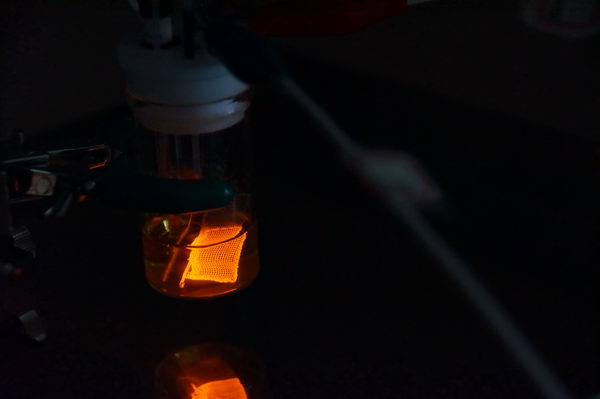
Glowing ITO plate:
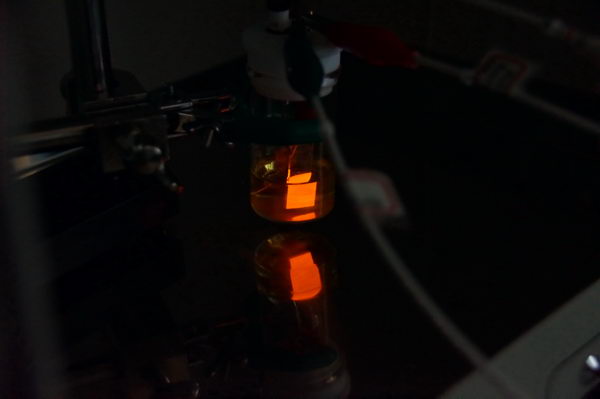
And the actual setup for demonstration is a simple three electrode cell:
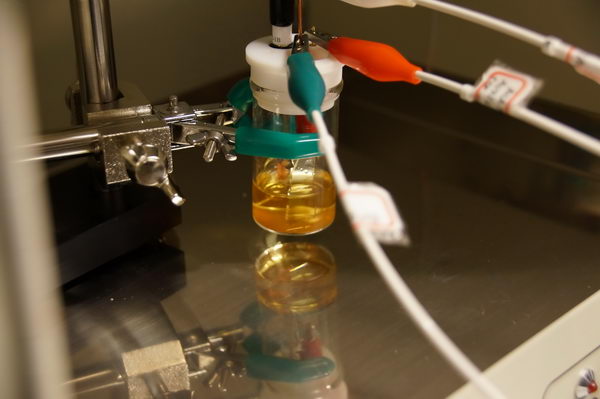
The disk electrode with 5 mm diameter can be seen as a reflection in the mirror surface, when it “turns on” after applying potential in bulk electrolysis or slowly starts glowing during the CV scan.
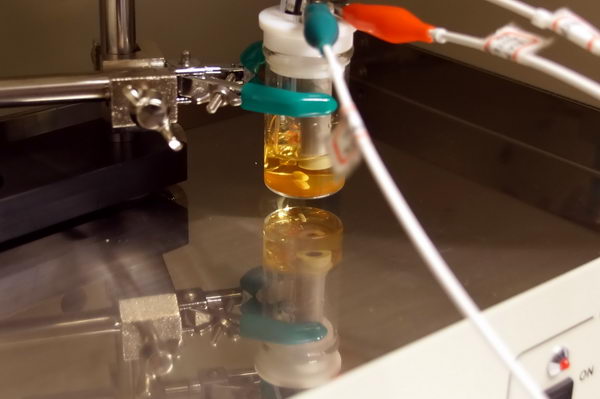
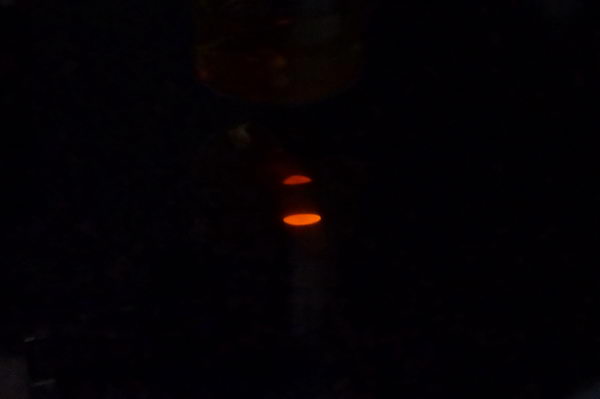
Finally, just playing with luminol: mixing two solutions rapidly, one is a luminol solution with hydrogen peroxide, and another is a dilute solution containg Co(II) salts acting as a catalyst:

Hemin (as well as ferricyanide) also gave long lasting shining when added to a solution containing luminol and H2O2 (and for that reason, luminol is used for detecting trace amounts of blood due to traces of iron from hemoglobin acting as a catalyst):
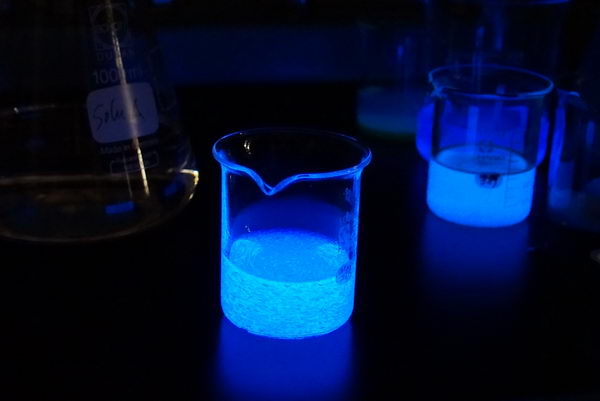
Happy Ainash after mixing at last the remaining solutions:

At this point we finished the lab, and here is a picture of Cao Dong and Ainash, first year chemistry graduate students who performed the experiments:
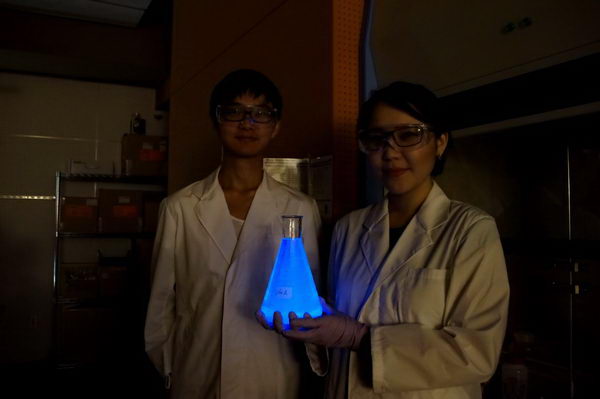
References:
- Rubinstein, I.; Bard, A. J. J. Am. Chem. Soc. 1981, 103, 512.
- Miao, W.; Choi, J.-P.; Bard, A. J. J. Am. Chem. Soc. 2002, 124, 14478.
- Zanello, P.; de Biani, F. F.; Nervi, C. “Inorganic Electrochemistry” (2011, RSC)



